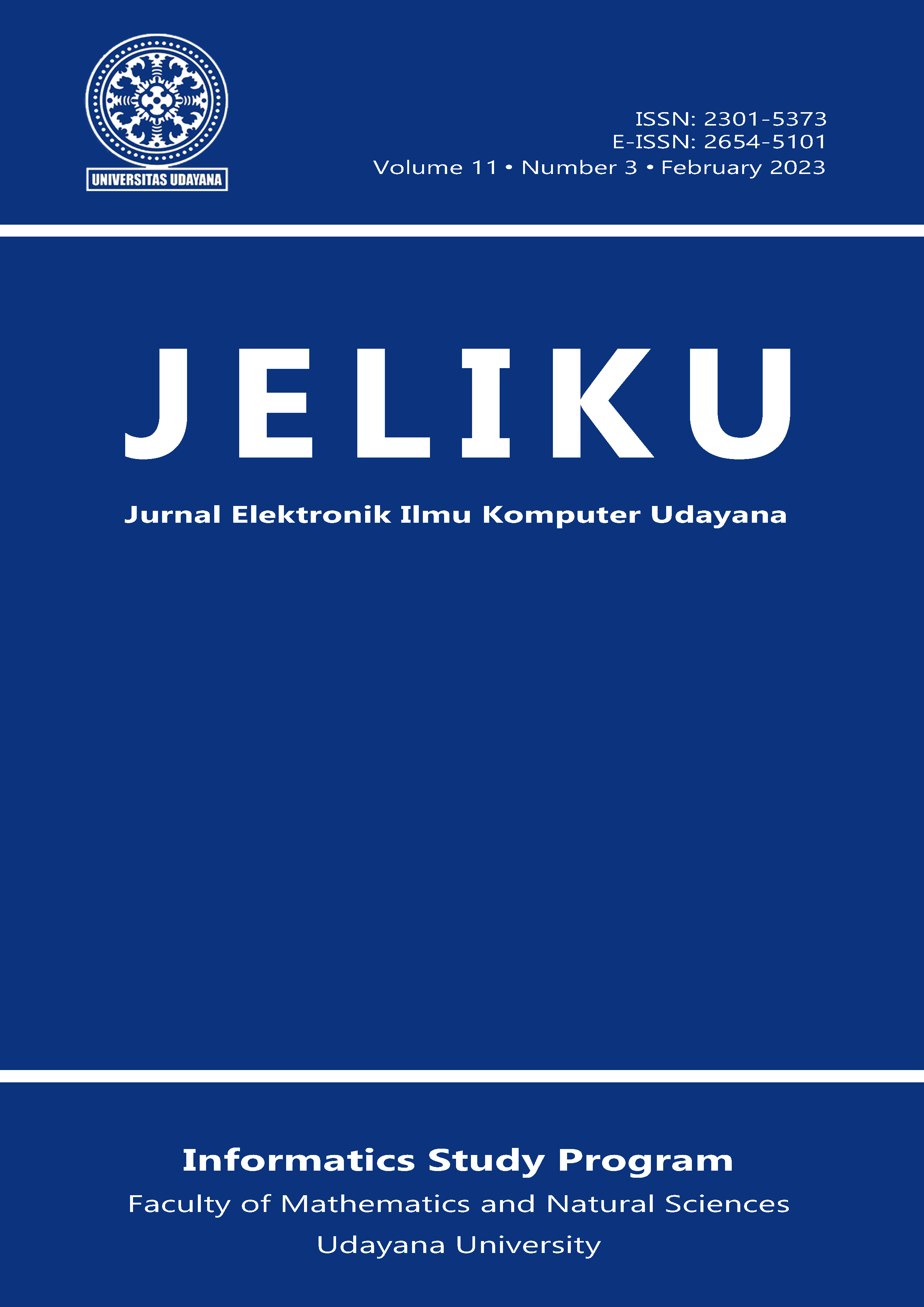Klasifikasi Motif Kain Tradisional Cepuk Menggunakan GLCM dan KNN
Abstract
Cepuk weaving is one of the typical woven fabrics from the Balinese area, precisely in Tanglad Village, Nusa Penida District, Klungkung Regency, which is usually used by the people of Nusa Penida for ceremonial/ritual needs, such as cutting teeth, cremation, melukat to daily clothing needs. For generations, Tanglad has six types of cepuk, namely Mekawis, Amethyst, Lingking Paku, Tangi Gede, Sudamala, and Kurung. Each type has a different motif with a distinctive color. Therefore, this study was conducted to determine whether the selection of features affects the accuracy value resulting from the system testing carried out, as well as introducing cepuk fabrics to the general public using AI that can classify types of cepuk woven fabrics using the (K-Nearest Neighbor) KNN method, after performing the feature extraction using (Grey Level Co-occurrence Matrix) GLCM method. The features taken are Contrast, Energy, Entropy, Homogeneity, Dissimilarity, ASM (Angular Second Moment), and IDM (Inverse Differential Moment), with variations in the angle of 0º, 45º, 90º, 135º. Based on research conducted on 44 testing data with 11 data for each class, the results obtained are 91.7% accuracy using the parameter value of k = 3.






